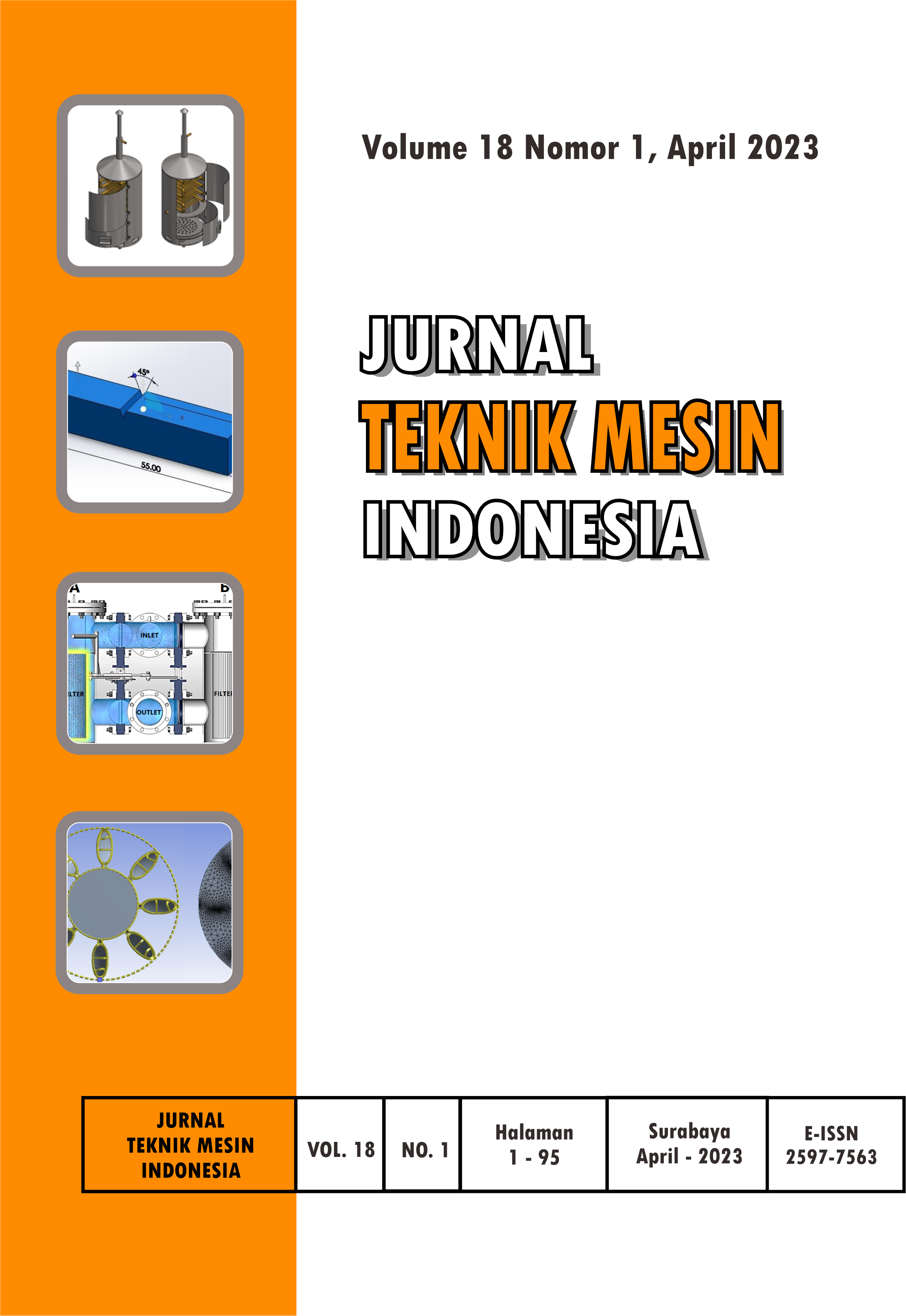Performance of pico-scale turgo turbine bucket using coconut shells spoons with variations inlet angle and nozzle distance to hydraulic efficiency
DOI:
https://doi.org/10.36289/jtmi.v18i1.429Keywords:
Inlet angle, nozzle distance, turgo turbine, picohydroAbstract
The United Nations Climate Change Conference of the Parties (COP26) has a main agenda, namely evaluating COP21, where the main target of COP21 is to maintain global temperature changes below 2 degrees Celsius (MoEF, 2021). Indonesia itself is committed to zero carbon emissions by 2060, and the target of a renewable energy mix by 2025 is 23%. Indonesia’s own renewable energy potential is 443 GW [13], but not all renewable energy can be used in some areas that have terrain problems. Picohydro turbines are suitable for choice, because these turbines have a relatively constant supply, can be placed in reservoirs and rivers, and are also not dependent on weather. Among several types of picohydro, the Turgo Turbine is a suitable turbine to choose, because it has cheap construction and maintenance costs, and only requires a low head. This study aims to determine the effect of changes in the inlet angle and nozzle distance on the hydraulic efficiency of turgo turbines with coconut shell blades. Variations in the entry angle are carried out, namely 10°, 20°, 30° and distance variations, namely 100 mm, 150 mm, 200 mm. Based on the results of the study, it can be concluded that the greatest hydraulic efficiency is at a variation in the entry angle of 10° with a nozzle distance of 100 mm, that is, numerically by 49%, and experimentally by 41.8%.










